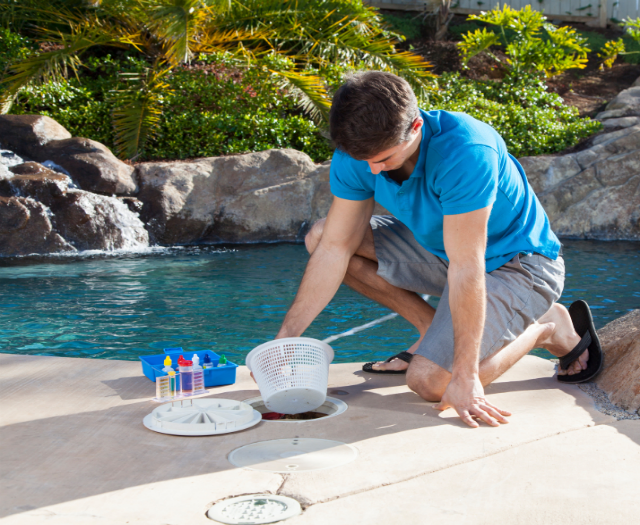Getting the most out of your pool means staying on top of pool maintenance. This doesn’t have to be a huge task. In fact, you can save money by learning how to do some basic pool care yourself. And, who doesn’t want some extra cash to add to the menagerie of blow-up floats that every pool needs? Combine our previous pool care tips with these to keep your pool clean and your wallet happy:
Shock your pool
If you think your pool only needs to be shocked when it’s opened and closed for the season, think again. Think of all the things your pool’s guests bring into and leave in your pool. We won’t go into details, but it’s enough to make you never want to put another toe in the water. There’s no need to panic though, because this is normal. It’s one of the reasons testing your pool water on a regular basis is so important. It’s also the reason pools need to be shocked throughout the swimming season.
Shocking your pool is a way to get rid of the organic contaminants that regular chlorine treatments cannot completely eliminate. This is especially true if your pool has high usage or if you allow dogs to swim in your pool. If your pool gets cloudy after high usage or heavy rain, you probably are not shocking it often enough. The cloudiness indicates the chlorine is being overwhelmed and needs an assist.
Add shock when the chlorine level is below one part per million. Apply the shock treatment after you are done using the pool for the day, then vacuum the pool the next morning. Once the chlorine level is back to normal the pool is all set for use.
Invest in a solar cover
Do you want to extend pool usage into the fall? You might want to consider investing in a solar cover. These covers float directly on top of the water and prevent heat loss and evaporation from taking place. This can add up to savings very quickly, especially if you have to replenish your pool with the hose on a regular basis.
Solar covers come in different designs, so it should be fairly easy to find one that is a perfect fit for your pool. You can put the solar cover on each night or if you’re not going to use the pool for a couple days.
Be aware for safety’s sake when it comes to solar covers. Always remove the cover completely before you allow anyone to swim in the pool. Also, don’t spread the cover out over your nice lawn unless you want a perfectly shaped area of burnt grass.
Backwash your sand filter
When the gauge on your filter rises to 10 pounds above start up pressure, it is time to backwash the filter. Backwashing is what cleans a sand filter system. Doing so is less expensive than replacing the sand, and it also helps to keep the filter doing its job at a peak performance level.
Backwashing will send debris out via the waste pipe because the water is going in reverse. It usually only takes about five minutes and is a great way to add years to your filter system.
Most sand filter systems should be backwashed every two weeks. Paying attention to the pressure gauge is the best way to know when it needs to be done.
In between backwashing, run your filter long enough so that all the water is cycled through. This usually takes about six to eight hours. This will keep your pool water refreshingly clean and inviting all summer long.
Pools don’t have to become a high-maintenance part of your home. Proactive maintenance is the best way to prevent problems, but when the unavoidable happens, it’s a good idea to have the protection of a home warranty. Contact American Home Shield to talk about protecting your pool today.
Post Author: andyc.




